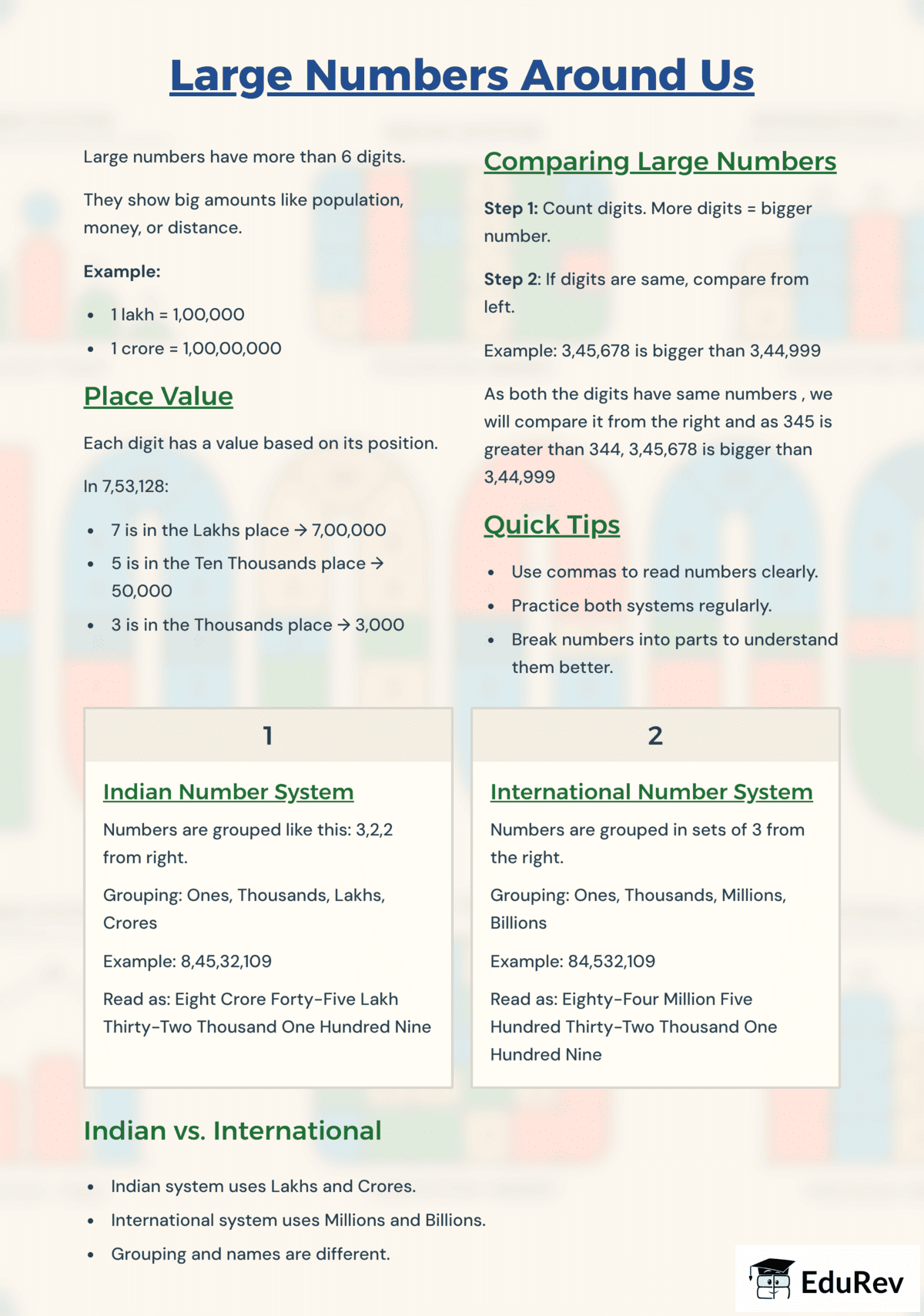Class 7 Exam > Class 7 Notes > Mathematics (Ganita Prakash) Class 7 - New NCERT > Infographics: Large Numbers Around Us
Infographics: Large Numbers Around Us | Mathematics (Ganita Prakash) Class 7 - New NCERT PDF Download

The document Infographics: Large Numbers Around Us | Mathematics (Ganita Prakash) Class 7 - New NCERT is a part of the Class 7 Course Mathematics (Ganita Prakash) Class 7 - New NCERT.
All you need of Class 7 at this link: Class 7
|
41 videos|251 docs|8 tests
|
FAQs on Infographics: Large Numbers Around Us - Mathematics (Ganita Prakash) Class 7 - New NCERT
| 1. What are large numbers and why are they important in our daily lives? |  |
Ans. Large numbers represent quantities that are significantly greater than what we typically encounter. They are important in various fields such as science, economics, and statistics, as they help us understand and visualize data related to populations, distances in space, or financial figures. For example, the population of a country can be in millions, while distances between celestial bodies can be in light-years, which are both large numbers that provide context to our understanding of the world.
| 2. How do we represent large numbers in a more manageable way? |  |
Ans. Large numbers can be represented in a more manageable way using scientific notation. This method allows us to express numbers as a product of a coefficient and a power of ten. For example, the large number 1,000,000 can be expressed as 1 x 10⁶. This simplification makes calculations easier and helps in comparing large figures without losing the essence of their magnitude.
| 3. Can you give examples of large numbers used in different fields? |  |
Ans. Yes, large numbers are prevalent in various fields. In astronomy, distances are often expressed in light-years, such as the distance from Earth to the nearest star, Proxima Centauri, which is about 4.24 light-years away. In finance, national debts can reach trillions of dollars; for instance, many countries report their GDPs in trillions to denote their economic size. Additionally, in biology, the estimated number of bacteria in a human gut can be around 10²⁴, showcasing the vastness of microscopic life.
| 4. What is the significance of understanding large numbers in mathematics? |  |
Ans. Understanding large numbers is significant in mathematics as it enhances our ability to interpret data, perform calculations, and solve problems related to real-world scenarios. It allows students to grasp concepts such as exponential growth, which is essential in understanding phenomena like population growth and financial investments. Moreover, it aids in developing critical thinking skills, as students learn to compare, round off, and manipulate large numbers effectively.
| 5. How do large numbers relate to scientific discoveries and advancements? |  |
Ans. Large numbers play a crucial role in scientific discoveries and advancements by helping researchers quantify and communicate findings. For example, in physics, the speed of light is approximately 3 x 10⁸ meters per second, a value that is fundamental to understanding the universe. Similarly, in medicine, large population samples are often required in clinical trials to ensure the reliability of results. Understanding and working with large numbers enable scientists to make informed decisions and advance knowledge in their fields.
Related Searches





















